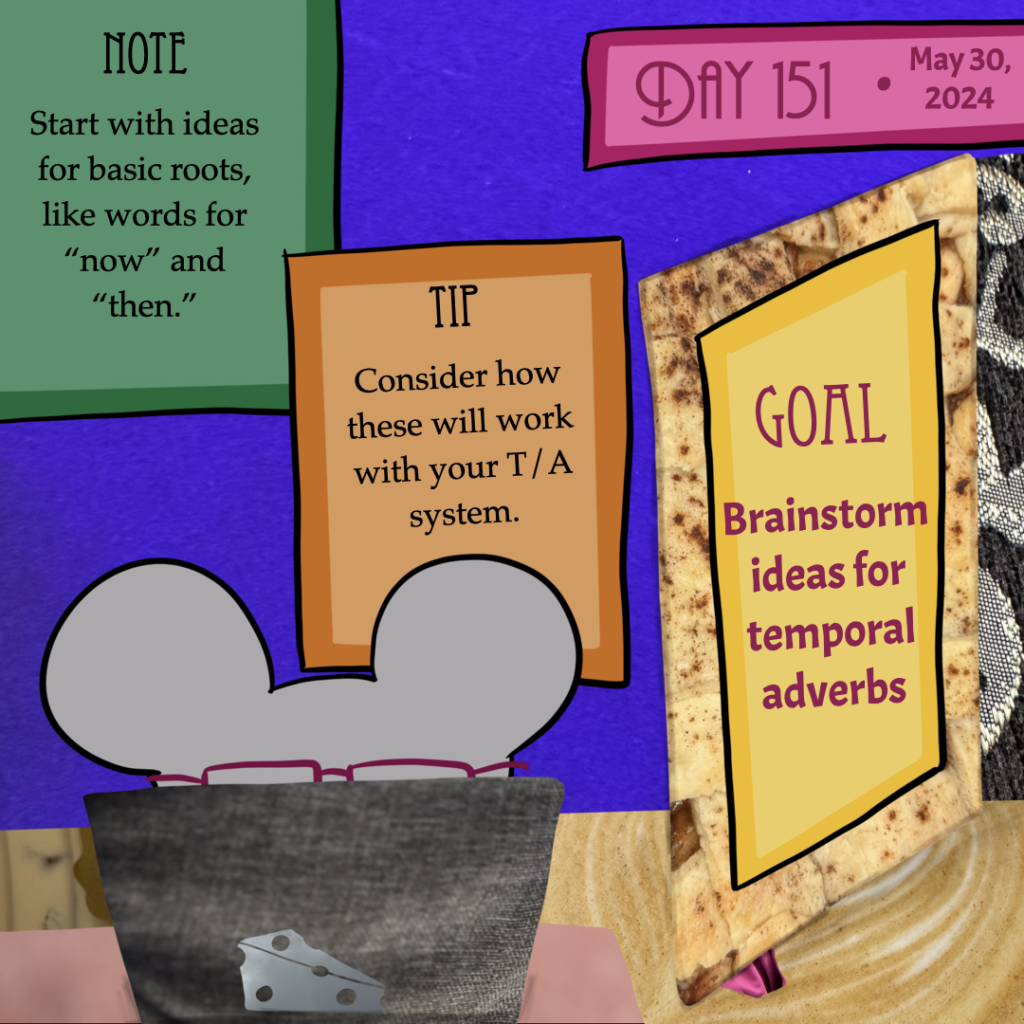
Goal: Brainstorm ideas for temporal adverbs
Note: Start with ideas for basic roots, like words for “now” and “then.”
Tip: Consider how these will work with your T/A system.
Work focus: Learn/Brainstorm/Try
Continue your adverbial brainstorming by turning your attention to temporal adverbs, starting with ideas for basic roots. Common basic temporal adverbs include “now” and “then.” A cool thing about a word like “then” is that you could treat it like English does—any time that is not right now. But you could also have different basic roots for “then,” where one refers specifically to a past “then” and another refers to a future “then” (a “then” yet to come).
As you think about these adverbs, you can also consider ways they might work with your T/A system. For instance, you could have a root that, when paired with a present tense verb, means “now.” But then if it is paired with a past tense verb, it means “then.” The root could be defined as something like “at that moment,” where the time frame of that moment entirely depends on the tense of the verb.
Other ideas you could start brainstorming include ones you may want to wait to create, such as where words for concepts like “today, tomorrow, yesterday” might come from. Some may be basic roots that have been semantically extended, but some may be compounded forms with a basic root that you want to create right now.
These brainstorms can be driven further by creating a metaphor of time for your language and its speakers. For instance, if they view time as a journey (like a physical “I’m out here walking and exploring the woods” journey), then words to refer to future events might be related to “face” or “forward” or “front” while words to refer to past events might be related to “back” or “behind.” Have some fun thinking about how your speakers view and use metaphor to understand time!
